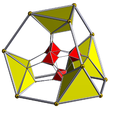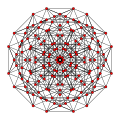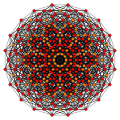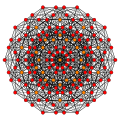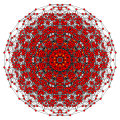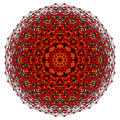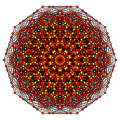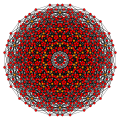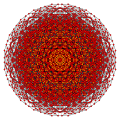| Cantic 6-cube Truncated 6-demicube | |
|---|---|
 D6 Coxeter plane projection | |
| Type | uniform polypeton |
| Schläfli symbol | t0,1{3,33,1} h2{4,34} |
| Coxeter-Dynkin diagram | |
| 5-faces | 76 |
| 4-faces | 636 |
| Cells | 2080 |
| Faces | 3200 |
| Edges | 2160 |
| Vertices | 480 |
| Vertex figure | ( )v[{ }x{3,3}] |
| Coxeter groups | D6, [33,1,1] |
| Properties | convex |
In six-dimensional geometry, a cantic 6-cube (or a truncated 6-demicube) is a uniform 6-polytope.








